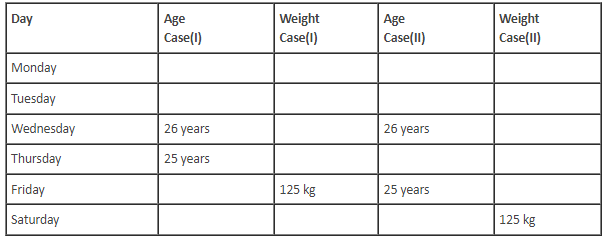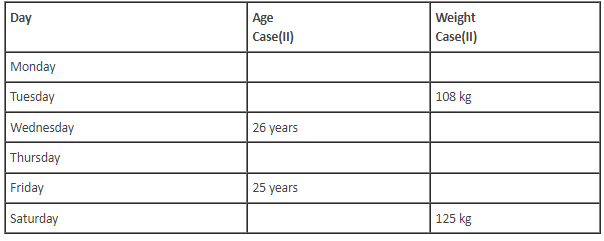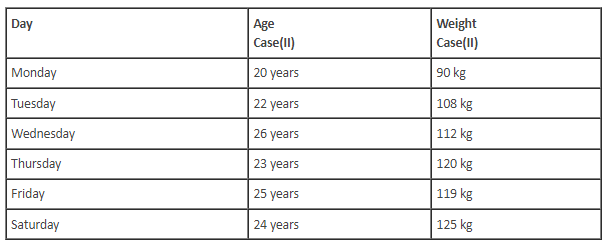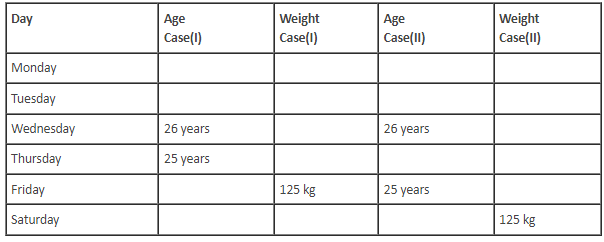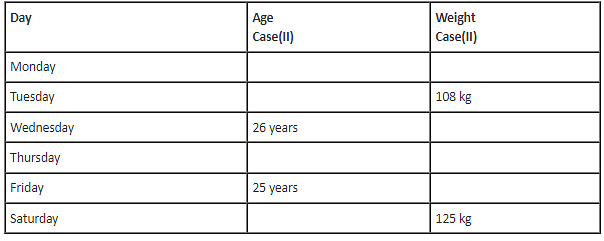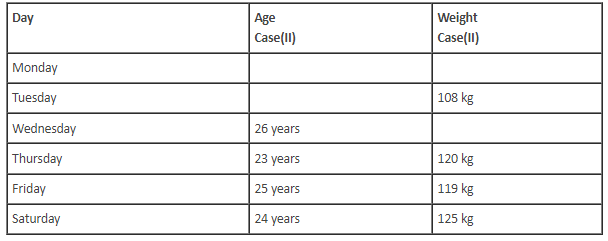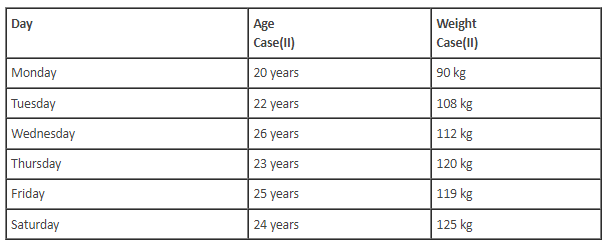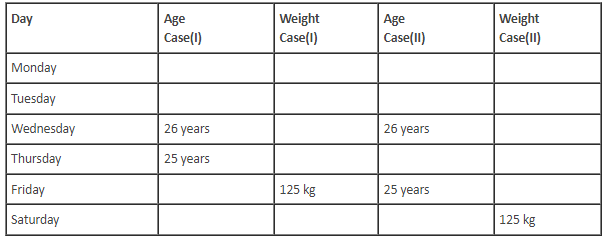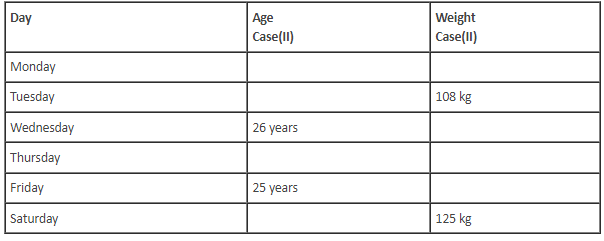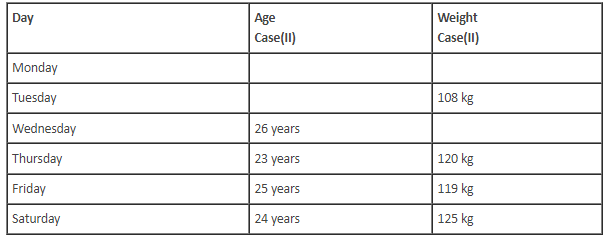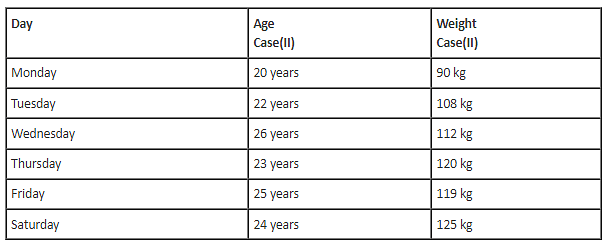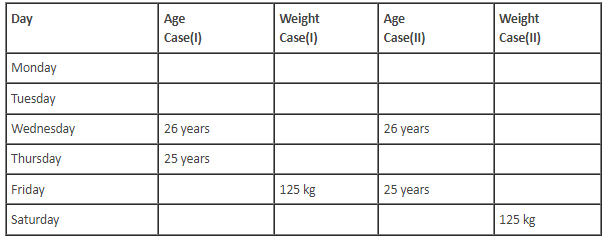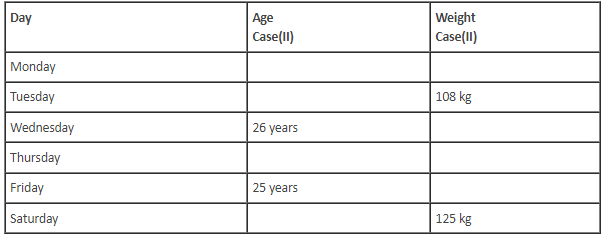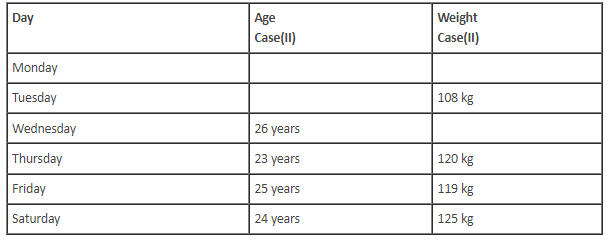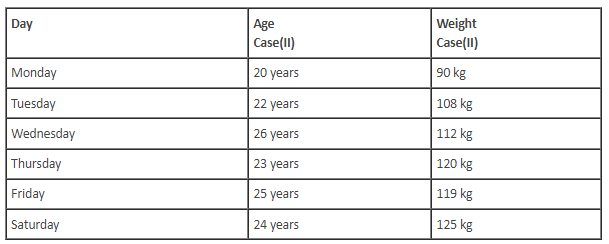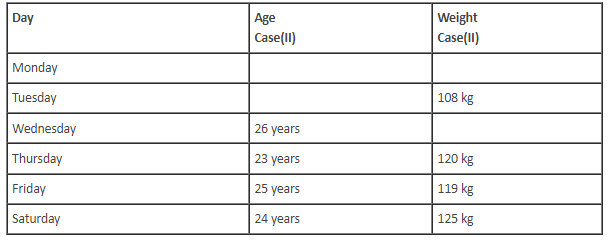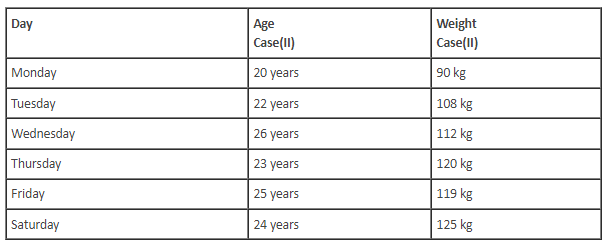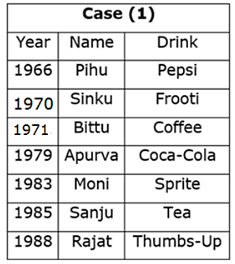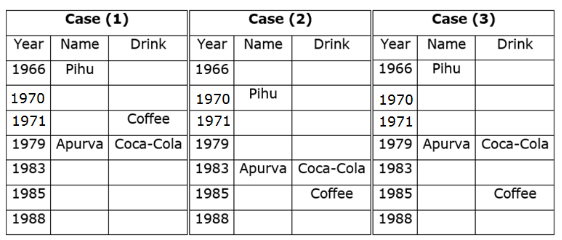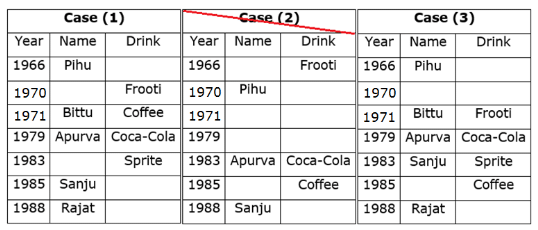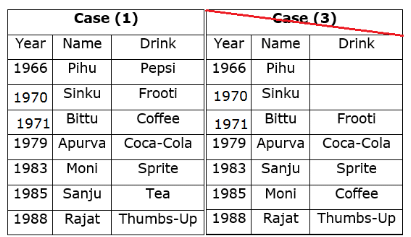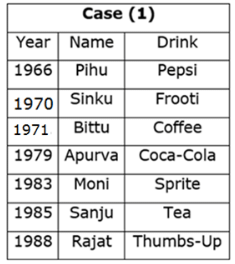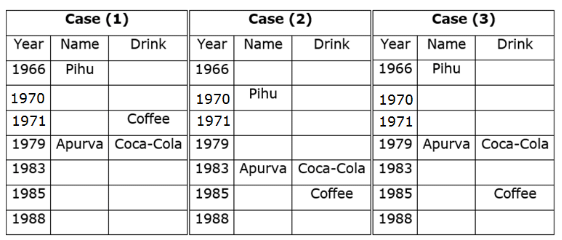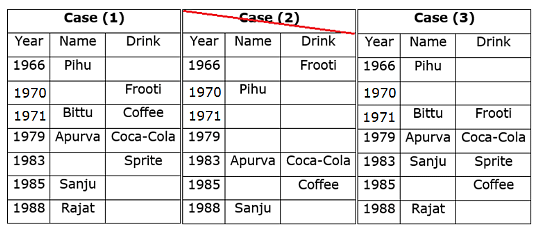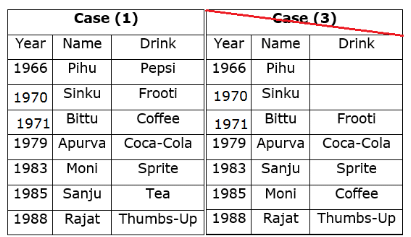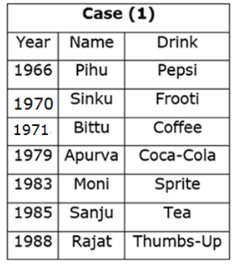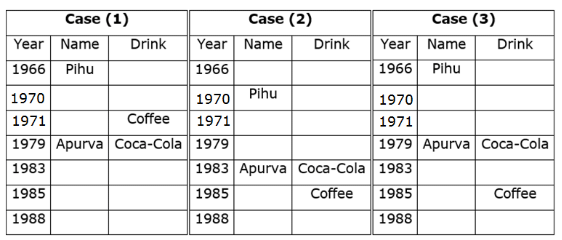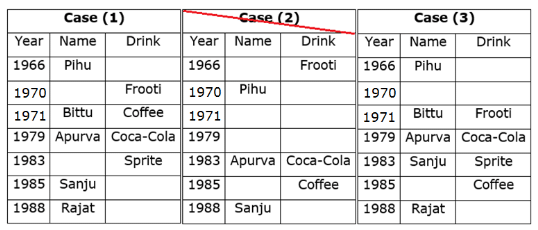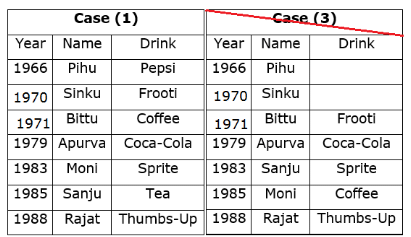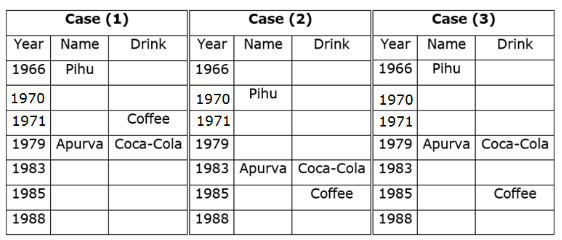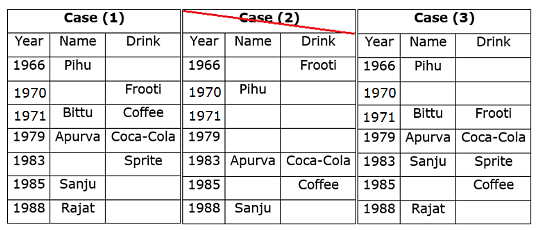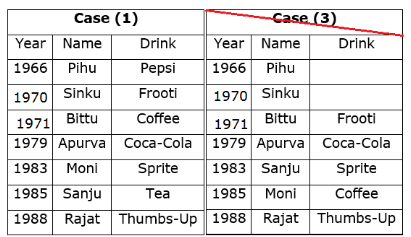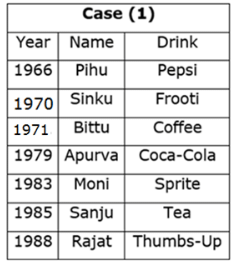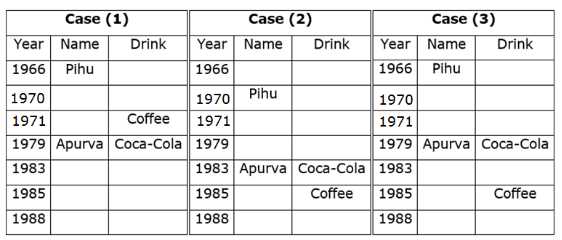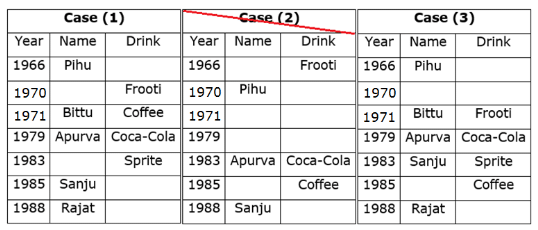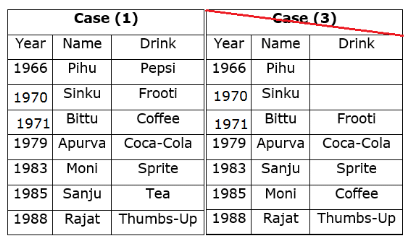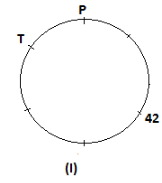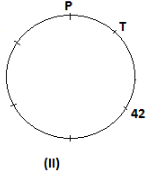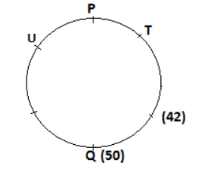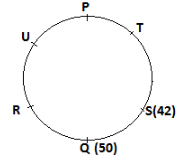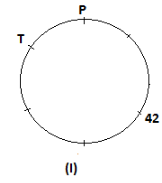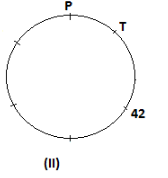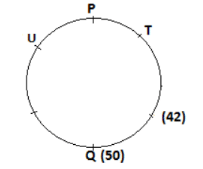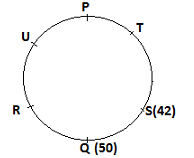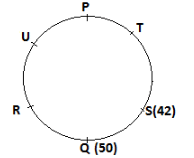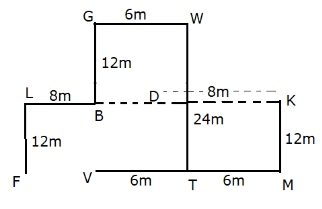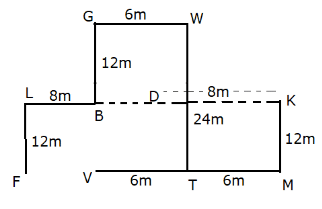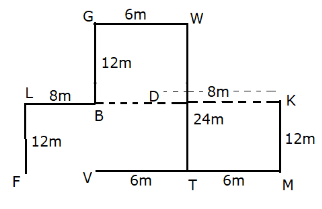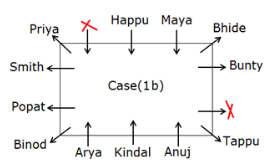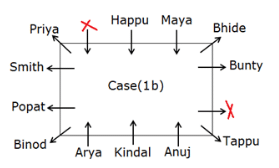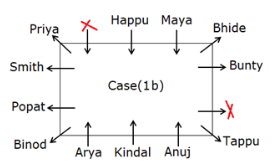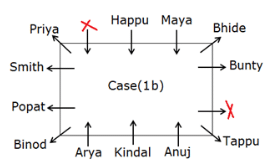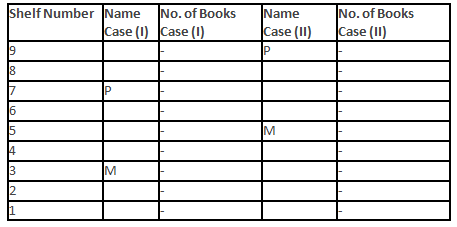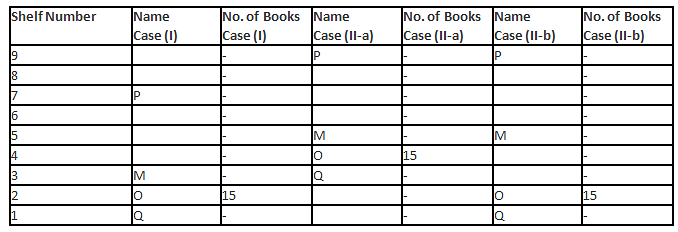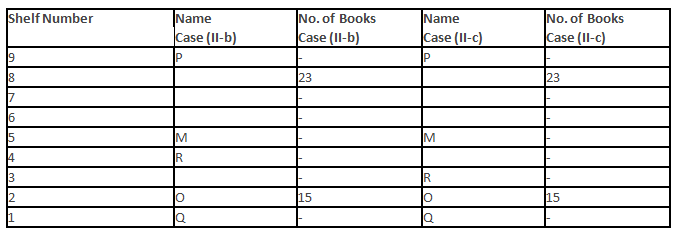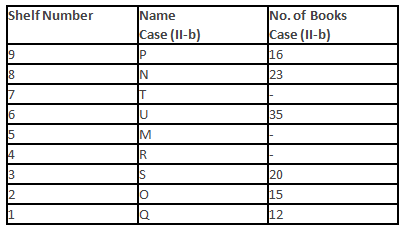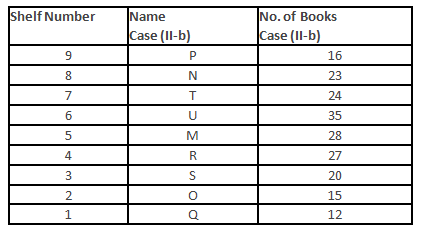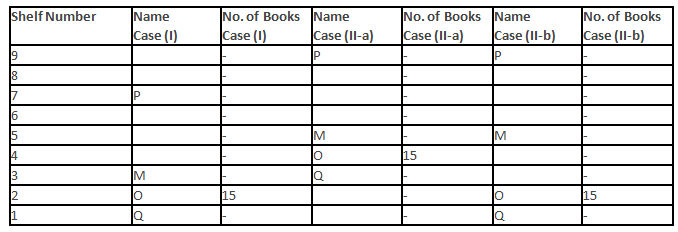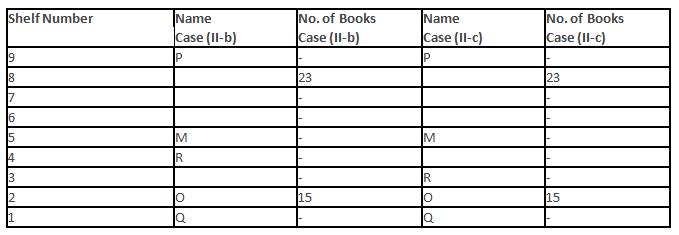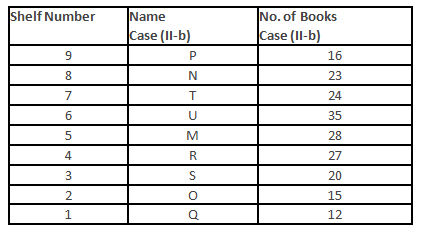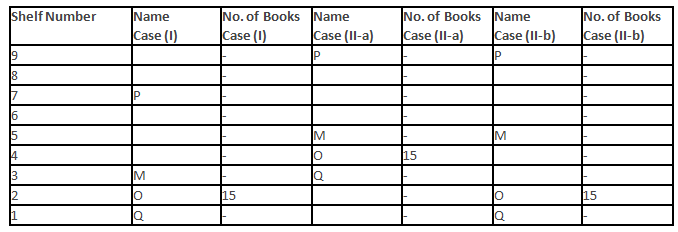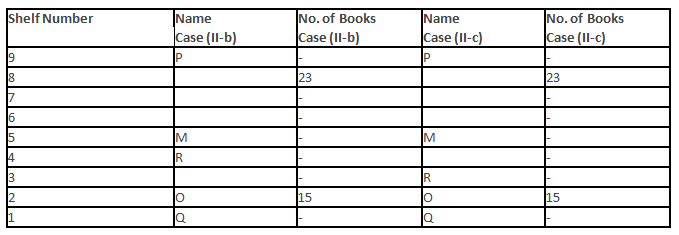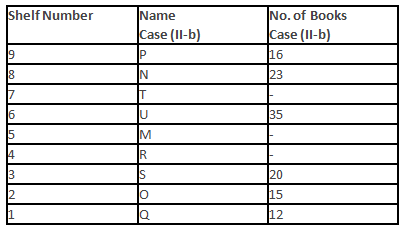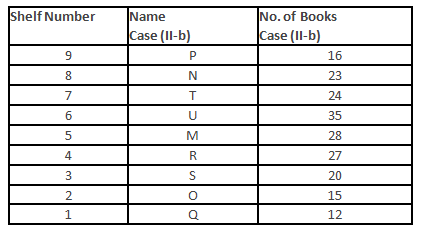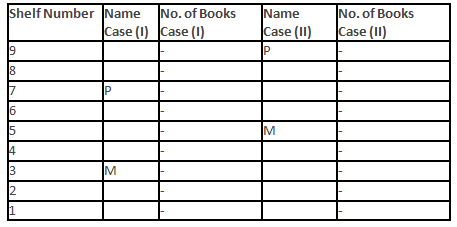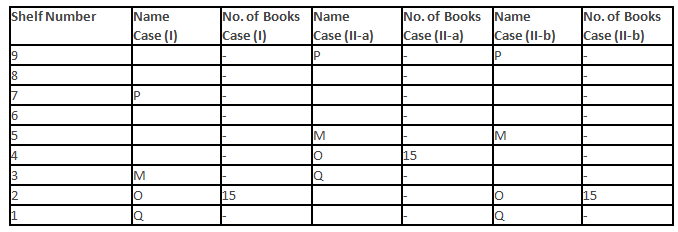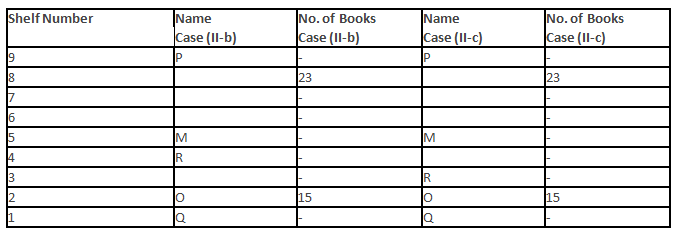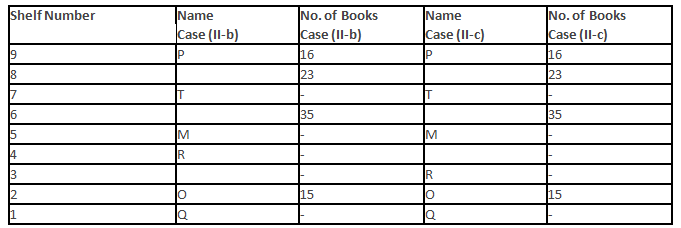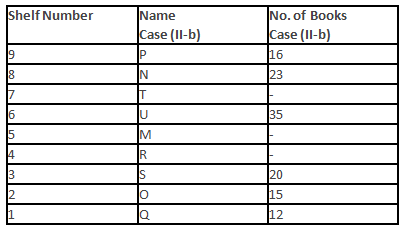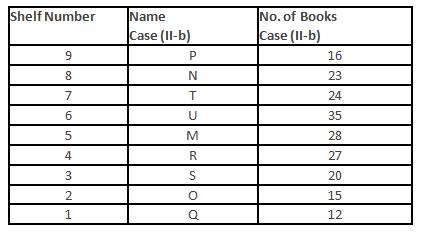RBI Assistant Mains Mock Test - 10 - Banking Exams MCQ
30 Questions MCQ Test - RBI Assistant Mains Mock Test - 10
Directions: Read the following information carefully and answer the question that follows.
6 people go to a gym everyday of the week, except for the rest day which is different for each. They all can lift different weights. The one who takes rest on Saturday is 1 year younger than the one who takes rest on Friday. The one who lifts 125 kg takes rest immediately after the one who is 25 years old. The sum of the weights lifted by the 20 years and 23 years old is 210 kg. The total of the weights lifted by the ones who take rest on Tuesday and Thursday is 228 kg. The difference between the ages of the one who can lift 108 kg and the one who takes rest on Saturday is 2 years. The number of people who take rest before the one who lifts 108 kg and after the 25 years old is the same. At least 2 people take rest before the one who is 25 years old. The oldest among them lifts 112 kg. The youngest of them lifts 90 kg. At least 2 people take rest between the ones who lift 108 kg and 125 kg. The one who lifts 120 kg is 2 years younger than the one who lifts 119 kg. The 24 years old takes rest immediately after the one who lifts 119 kg. The one who takes rest on Wednesday is 26 years old.
The number of people who take rest between the ones who lift 90 kg and 119 kg is
Directions: Read the following information carefully and answer the question that follows.
6 people go to a gym everyday of the week, except for the rest day which is different for each. They all can lift different weights. The one who takes rest on Saturday is 1 year younger than the one who takes rest on Friday. The one who lifts 125 kg takes rest immediately after the one who is 25 years old. The sum of the weights lifted by the 20 years and 23 years old is 210 kg. The total of the weights lifted by the ones who take rest on Tuesday and Thursday is 228 kg. The difference between the ages of the one who can lift 108 kg and the one who takes rest on Saturday is 2 years. The number of people who take rest before the one who lifts 108 kg and after the 25 years old is the same. At least 2 people take rest before the one who is 25 years old. The oldest among them lifts 112 kg. The youngest of them lifts 90 kg. At least 2 people take rest between the ones who lift 108 kg and 125 kg. The one who lifts 120 kg is 2 years younger than the one who lifts 119 kg. The 24 years old takes rest immediately after the one who lifts 119 kg. The one who takes rest on Wednesday is 26 years old.
What is the weight lifted by the 25 years old?
| 1 Crore+ students have signed up on EduRev. Have you? Download the App |
Directions: Read the following information carefully and answer the question that follows.
6 people go to a gym everyday of the week, except for the rest day which is different for each. They all can lift different weights. The one who takes rest on Saturday is 1 year younger than the one who takes rest on Friday. The one who lifts 125 kg takes rest immediately after the one who is 25 years old. The sum of the weights lifted by the 20 years and 23 years old is 210 kg. The total of the weights lifted by the ones who take rest on Tuesday and Thursday is 228 kg. The difference between the ages of the one who can lift 108 kg and the one who takes rest on Saturday is 2 years. The number of people who take rest before the one who lifts 108 kg and after the 25 years old is the same. At least 2 people take rest before the one who is 25 years old. The oldest among them lifts 112 kg. The youngest of them lifts 90 kg. At least 2 people take rest between the ones who lift 108 kg and 125 kg. The one who lifts 120 kg is 2 years younger than the one who lifts 119 kg. The 24 years old takes rest immediately after the one who lifts 119 kg. The one who takes rest on Wednesday is 26 years old.
The 23 years old takes rest on
Directions: Read the following information carefully and answer the question that follows.
6 people go to a gym everyday of the week, except for the rest day which is different for each. They all can lift different weights. The one who takes rest on Saturday is 1 year younger than the one who takes rest on Friday. The one who lifts 125 kg takes rest immediately after the one who is 25 years old. The sum of the weights lifted by the 20 years and 23 years old is 210 kg. The total of the weights lifted by the ones who take rest on Tuesday and Thursday is 228 kg. The difference between the ages of the one who can lift 108 kg and the one who takes rest on Saturday is 2 years. The number of people who take rest before the one who lifts 108 kg and after the 25 years old is the same. At least 2 people take rest before the one who is 25 years old. The oldest among them lifts 112 kg. The youngest of them lifts 90 kg. At least 2 people take rest between the ones who lift 108 kg and 125 kg. The one who lifts 120 kg is 2 years younger than the one who lifts 119 kg. The 24 years old takes rest immediately after the one who lifts 119 kg. The one who takes rest on Wednesday is 26 years old.
The number of people who are younger than the one who lifts 120 kg is
Directions: Read the following information carefully and answer the question that follows.
6 people go to a gym everyday of the week, except for the rest day which is different for each. They all can lift different weights. The one who takes rest on Saturday is 1 year younger than the one who takes rest on Friday. The one who lifts 125 kg takes rest immediately after the one who is 25 years old. The sum of the weights lifted by the 20 years and 23 years old is 210 kg. The total of the weights lifted by the ones who take rest on Tuesday and Thursday is 228 kg. The difference between the ages of the one who can lift 108 kg and the one who takes rest on Saturday is 2 years. The number of people who take rest before the one who lifts 108 kg and after the 25 years old is the same. At least 2 people take rest before the one who is 25 years old. The oldest among them lifts 112 kg. The youngest of them lifts 90 kg. At least 2 people take rest between the ones who lift 108 kg and 125 kg. The one who lifts 120 kg is 2 years younger than the one who lifts 119 kg. The 24 years old takes rest immediately after the one who lifts 119 kg. The one who takes rest on Wednesday is 26 years old.
Which of the following combinations is false?
Study the following information carefully and answer the below questions.
Seven persons namely – Apurva, Pihu, Bittu, Moni, Rajat, Sinku, and Sanju were born in different years viz.- 1966, 1971, 1970, 1979, 1983, 1985, and 1988. Each person likes to drink different things viz.- Frooti, Thumbs-Up, Coffee, Pepsi, Tea, Coca-Cola, and Sprite. All the above information is not necessarily in the same order. The age of each person is calculated from the base year 2020.
At least one person was born between the one who likes Coffee and Pihu, who neither likes Frooti nor Sprite. The age of the person who likes Coffee is a multiple of 7 and was born after Pihu, whose age is an even number. Two persons were born between Pihu and Apurva, who like Coca-Cola. Sanju neither likes Coffee nor Thumbs-up but was born after Apurva. The number of persons born after Sanuj is the same as the number of persons born before the one who likes Frooti. The number of persons born between Rajat and the one who likes Coca-Cola is one more than the number of persons born between Bittu and the one who likes Sprite. Rajat does not like Sprite. Rajat was born in a leap year but neither likes Frooti nor born before Bittu. At least two persons were born between Sinku and the one who likes Thumps-Up. Sinku was born before the one who likes Sprite. The number of persons born between Moni and the one who likes Tea is two less than Apurva and the one who likes Pepsi.
Who among the following person likes Coffee?
Study the following information carefully and answer the below questions.
Seven persons namely – Apurva, Pihu, Bittu, Moni, Rajat, Sinku, and Sanju were born in different years viz.- 1966, 1971, 1970, 1979, 1983, 1985, and 1988. Each person likes to drink different things viz.- Frooti, Thumbs-Up, Coffee, Pepsi, Tea, Coca-Cola, and Sprite. All the above information is not necessarily in the same order. The age of each person is calculated from the base year 2020.
At least one person was born between the one who likes Coffee and Pihu, who neither likes Frooti nor Sprite. The age of the person who likes Coffee is a multiple of 7 and was born after Pihu, whose age is an even number. Two persons were born between Pihu and Apurva, who like Coca-Cola. Sanju neither likes Coffee nor Thumbs-up but was born after Apurva. The number of persons born after Sanuj is the same as the number of persons born before the one who likes Frooti. The number of persons born between Rajat and the one who likes Coca-Cola is one more than the number of persons born between Bittu and the one who likes Sprite. Rajat does not like Sprite. Rajat was born in a leap year but neither likes Frooti nor born before Bittu. At least two persons were born between Sinku and the one who likes Thumps-Up. Sinku was born before the one who likes Sprite. The number of persons born between Moni and the one who likes Tea is two less than Apurva and the one who likes Pepsi.
Which of the following combination is not true?
Study the following information carefully and answer the below questions.
Seven persons namely – Apurva, Pihu, Bittu, Moni, Rajat, Sinku, and Sanju were born in different years viz.- 1966, 1971, 1970, 1979, 1983, 1985, and 1988. Each person likes to drink different things viz.- Frooti, Thumbs-Up, Coffee, Pepsi, Tea, Coca-Cola, and Sprite. All the above information is not necessarily in the same order. The age of each person is calculated from the base year 2020.
At least one person was born between the one who likes Coffee and Pihu, who neither likes Frooti nor Sprite. The age of the person who likes Coffee is a multiple of 7 and was born after Pihu, whose age is an even number. Two persons were born between Pihu and Apurva, who like Coca-Cola. Sanju neither likes Coffee nor Thumbs-up but was born after Apurva. The number of persons born after Sanuj is the same as the number of persons born before the one who likes Frooti. The number of persons born between Rajat and the one who likes Coca-Cola is one more than the number of persons born between Bittu and the one who likes Sprite. Rajat does not like Sprite. Rajat was born in a leap year but neither likes Frooti nor born before Bittu. At least two persons were born between Sinku and the one who likes Thumps-Up. Sinku was born before the one who likes Sprite. The number of persons born between Moni and the one who likes Tea is two less than Apurva and the one who likes Pepsi.
Who among the following person was born just after Moni?
Study the following information carefully and answer the below questions.
Seven persons namely – Apurva, Pihu, Bittu, Moni, Rajat, Sinku, and Sanju were born in different years viz.- 1966, 1971, 1970, 1979, 1983, 1985, and 1988. Each person likes to drink different things viz.- Frooti, Thumbs-Up, Coffee, Pepsi, Tea, Coca-Cola, and Sprite. All the above information is not necessarily in the same order. The age of each person is calculated from the base year 2020.
At least one person was born between the one who likes Coffee and Pihu, who neither likes Frooti nor Sprite. The age of the person who likes Coffee is a multiple of 7 and was born after Pihu, whose age is an even number. Two persons were born between Pihu and Apurva, who like Coca-Cola. Sanju neither likes Coffee nor Thumbs-up but was born after Apurva. The number of persons born after Sanuj is the same as the number of persons born before the one who likes Frooti. The number of persons born between Rajat and the one who likes Coca-Cola is one more than the number of persons born between Bittu and the one who likes Sprite. Rajat does not like Sprite. Rajat was born in a leap year but neither likes Frooti nor born before Bittu. At least two persons were born between Sinku and the one who likes Thumps-Up. Sinku was born before the one who likes Sprite. The number of persons born between Moni and the one who likes Tea is two less than Apurva and the one who likes Pepsi.
How many persons were born after Rajat?
Study the following information carefully and answer the below questions.
Seven persons namely – Apurva, Pihu, Bittu, Moni, Rajat, Sinku, and Sanju were born in different years viz.- 1966, 1971, 1970, 1979, 1983, 1985, and 1988. Each person likes to drink different things viz.- Frooti, Thumbs-Up, Coffee, Pepsi, Tea, Coca-Cola, and Sprite. All the above information is not necessarily in the same order. The age of each person is calculated from the base year 2020.
At least one person was born between the one who likes Coffee and Pihu, who neither likes Frooti nor Sprite. The age of the person who likes Coffee is a multiple of 7 and was born after Pihu, whose age is an even number. Two persons were born between Pihu and Apurva, who like Coca-Cola. Sanju neither likes Coffee nor Thumbs-up but was born after Apurva. The number of persons born after Sanuj is the same as the number of persons born before the one who likes Frooti. The number of persons born between Rajat and the one who likes Coca-Cola is one more than the number of persons born between Bittu and the one who likes Sprite. Rajat does not like Sprite. Rajat was born in a leap year but neither likes Frooti nor born before Bittu. At least two persons were born between Sinku and the one who likes Thumps-Up. Sinku was born before the one who likes Sprite. The number of persons born between Moni and the one who likes Tea is two less than Apurva and the one who likes Pepsi.
Which of the following statement is/are not true??
Directions: Study the following information carefully and answer the question given below.
Six persons P, Q, R, S, T and U are sitting around a circular table facing towards the centre. All of them have different weights.
The one whose weight is 42 kg is sitting second to the left of P. R is the heaviest and sitting second to the left of S. U is heavier than P and T and is sitting second to the left of Q. Only one person's weight is less than Q's weight. Neither P nor T is the lightest. Q's weight is 50 kg and his weight is 8 kg more than the one whose weight is the lightest amongst them all. Q is not an immediate neighbour of P. T is one of the immediate neighbours of P.
Who amongst the following is the third heaviest?
Directions: Study the following information carefully and answer the question given below.
Six persons P, Q, R, S, T and U are sitting around a circular table facing towards the centre. All of them have different weights.
The one whose weight is 42 kg is sitting second to the left of P. R is the heaviest and sitting second to the left of S. U is heavier than P and T and is sitting second to the left of Q. Only one person's weight is less than Q's weight. Neither P nor T is the lightest. Q's weight is 50 kg and his weight is 8 kg more than the one whose weight is the lightest amongst them all. Q is not an immediate neighbour of P. T is one of the immediate neighbours of P.
If the total weight of R and S is 105 kg, then what will be the weight of the one who is the heaviest?
Directions: Study the following information carefully and answer the question given below.
Six persons P, Q, R, S, T and U are sitting around a circular table facing towards the centre. All of them have different weights.
The one whose weight is 42 kg is sitting second to the left of P. R is the heaviest and sitting second to the left of S. U is heavier than P and T and is sitting second to the left of Q. Only one person's weight is less than Q's weight. Neither P nor T is the lightest. Q's weight is 50 kg and his weight is 8 kg more than the one whose weight is the lightest amongst them all. Q is not an immediate neighbour of P. T is one of the immediate neighbours of P.
What can be the possible weight of U?
Study the following information carefully and answer the below questions.
“P @ Q” means “P is 6m east of Q”.
“P % Q” means “Q is 24m south of P”.
“P & Q” means “Q is 8m west of P”.
“P ^ Q” means “P is 12m north of Q”.
“R $ PQ” means “R is the midpoint of line PQ”.
Conditions: M@T$VM; K&D; W%T; B&L^F; K^M; G^B;W@G.
What is the position of F with respect to V?
Study the following information carefully and answer the below questions.
“P @ Q” means “P is 6m east of Q”.
“P % Q” means “Q is 24m south of P”.
“P & Q” means “Q is 8m west of P”.
“P ^ Q” means “P is 12m north of Q”.
“R $ PQ” means “R is the midpoint of line PQ”.
Conditions: M@T$VM; K&D; W%T; B&L^F; K^M; G^B;W@G.
What is the shortest distance between points L and D?
Study the following information carefully and answer the below questions.
“P @ Q” means “P is 6m east of Q”.
“P % Q” means “Q is 24m south of P”.
“P & Q” means “Q is 8m west of P”.
“P ^ Q” means “P is 12m north of Q”.
“R $ PQ” means “R is the midpoint of line PQ”.
Conditions: M@T$VM; K&D; W%T; B&L^F; K^M; G^B;W@G.
If point Q is 26m west of D, then which of the following statement with respect to D is not true?
I). F is 12√2m from D.
II). D is to the South-west of G
III). D is 24m to the west of B
Directions: Study the following information carefully and answer the question that follows.
Eight people, namely L, N, O, P, Q, R, S and Z, are sitting in a row facing north. All of them are of different ages viz. 9 years, 19 years, 24 years, 27 years, 36 years, 45 years, 52 years and 68 years, but not necessarily in the same order.
The one whose age is 45 years sits second to the right of S. The difference between the ages of Z and R is 3 years. Either O or P sits at the right end of the row. Three people sit between the one whose age is a perfect square and the one whose age is a prime number. Only S is older than O. P's age is a multiple of five. R is older than Z. R sits to the immediate left of the one who is the second eldest person. N is an immediate neighbour of neither L nor R. Four people sit to the right of Z. The difference between the ages of the immediate neighbours of L is 12 years. L is the youngest person in the row. The number of persons sitting between S and Z is the same as that between L and O. O is not an immediate neighbour of Z.
Who among the following is 36 years old?
Directions: Study the following information carefully and answer the question that follows.
Eight people, namely L, N, O, P, Q, R, S and Z, are sitting in a row facing north. All of them are of different ages viz. 9 years, 19 years, 24 years, 27 years, 36 years, 45 years, 52 years and 68 years, but not necessarily in the same order.
The one whose age is 45 years sits second to the right of S. The difference between the ages of Z and R is 3 years. Either O or P sits at the right end of the row. Three people sit between the one whose age is a perfect square and the one whose age is a prime number. Only S is older than O. P's age is a multiple of five. R is older than Z. R sits to the immediate left of the one who is the second eldest person. N is an immediate neighbour of neither L nor R. Four people sit to the right of Z. The difference between the ages of the immediate neighbours of L is 12 years. L is the youngest person in the row. The number of persons sitting between S and Z is the same as that between L and O. O is not an immediate neighbour of Z.
Which person sits to the immediate left of Z?
Directions: Study the following information carefully and answer the question that follows.
Eight people, namely L, N, O, P, Q, R, S and Z, are sitting in a row facing north. All of them are of different ages viz. 9 years, 19 years, 24 years, 27 years, 36 years, 45 years, 52 years and 68 years, but not necessarily in the same order.
The one whose age is 45 years sits second to the right of S. The difference between the ages of Z and R is 3 years. Either O or P sits at the right end of the row. Three people sit between the one whose age is a perfect square and the one whose age is a prime number. Only S is older than O. P's age is a multiple of five. R is older than Z. R sits to the immediate left of the one who is the second eldest person. N is an immediate neighbour of neither L nor R. Four people sit to the right of Z. The difference between the ages of the immediate neighbours of L is 12 years. L is the youngest person in the row. The number of persons sitting between S and Z is the same as that between L and O. O is not an immediate neighbour of Z.
What is the number of persons sitting between Z and R?
Directions: Study the following information carefully and answer the question that follows.
Eight people, namely L, N, O, P, Q, R, S and Z, are sitting in a row facing north. All of them are of different ages viz. 9 years, 19 years, 24 years, 27 years, 36 years, 45 years, 52 years and 68 years, but not necessarily in the same order.
The one whose age is 45 years sits second to the right of S. The difference between the ages of Z and R is 3 years. Either O or P sits at the right end of the row. Three people sit between the one whose age is a perfect square and the one whose age is a prime number. Only S is older than O. P's age is a multiple of five. R is older than Z. R sits to the immediate left of the one who is the second eldest person. N is an immediate neighbour of neither L nor R. Four people sit to the right of Z. The difference between the ages of the immediate neighbours of L is 12 years. L is the youngest person in the row. The number of persons sitting between S and Z is the same as that between L and O. O is not an immediate neighbour of Z.
What is difference between the ages of P and R?
Directions: Study the following information carefully and answer the question that follows.
Eight people, namely L, N, O, P, Q, R, S and Z, are sitting in a row facing north. All of them are of different ages viz. 9 years, 19 years, 24 years, 27 years, 36 years, 45 years, 52 years and 68 years, but not necessarily in the same order.
The one whose age is 45 years sits second to the right of S. The difference between the ages of Z and R is 3 years. Either O or P sits at the right end of the row. Three people sit between the one whose age is a perfect square and the one whose age is a prime number. Only S is older than O. P's age is a multiple of five. R is older than Z. R sits to the immediate left of the one who is the second eldest person. N is an immediate neighbour of neither L nor R. Four people sit to the right of Z. The difference between the ages of the immediate neighbours of L is 12 years. L is the youngest person in the row. The number of persons sitting between S and Z is the same as that between L and O. O is not an immediate neighbour of Z.
As per the given arrangement, S is related to 45 years old in a certain way and N is related to 24 years old in the same way. To which of the following is L related in the same way?
Study the following information carefully and answer the below questions.
Fourteen chairs are kept around a rectangular table in such a way that three chairs are kept on each of the longer sides, two chairs are kept on each smaller side, and one chair is kept on each corner. Chairs on longer sides are facing the center whereas other chairs are facing away from the center. Two chairs are vacant and the vacant chairs are neither kept at the corners nor kept adjacent to each other.
Kindal sits fifth to the right of Bhide, who sits at one of the corners. A person facing Kindal sits fourth to the right of Popat. Arya and Anju are sitting on the same edges. A person sitting immediate right of Popat sits three places away from Arya. Anuj neither sits adjacent to Bhide nor sits adjacent to Smith. One person sits between Bunty and Anuj. Two persons are sitting between Happu and Bunty. A person sitting opposite to Bunty sits immediately left of Priya. Smith and Happu sit third to the right of each other. Smith neither sits adjacent to Bhide nor sits facing Kindal. A person sitting opposite to Maya sits immediate right of Tappu who is not adjacent to Smith. Bindo is one of the persons sitting at one of the corners.
What is the position of Tappu with respect to Kindal?
Study the following information carefully and answer the below questions.
Fourteen chairs are kept around a rectangular table in such a way that three chairs are kept on each of the longer sides, two chairs are kept on each smaller side, and one chair is kept on each corner. Chairs on longer sides are facing the center whereas other chairs are facing away from the center. Two chairs are vacant and the vacant chairs are neither kept at the corners nor kept adjacent to each other.
Kindal sits fifth to the right of Bhide, who sits at one of the corners. A person facing Kindal sits fourth to the right of Popat. Arya and Anju are sitting on the same edges. A person sitting immediate right of Popat sits three places away from Arya. Anuj neither sits adjacent to Bhide nor sits adjacent to Smith. One person sits between Bunty and Anuj. Two persons are sitting between Happu and Bunty. A person sitting opposite to Bunty sits immediately left of Priya. Smith and Happu sit third to the right of each other. Smith neither sits adjacent to Bhide nor sits facing Kindal. A person sitting opposite to Maya sits immediate right of Tappu who is not adjacent to Smith. Bindo is one of the persons sitting at one of the corners.
Who among the following person sits second to the right of Tappu?
Study the following information carefully and answer the below questions.
Fourteen chairs are kept around a rectangular table in such a way that three chairs are kept on each of the longer sides, two chairs are kept on each smaller side, and one chair is kept on each corner. Chairs on longer sides are facing the center whereas other chairs are facing away from the center. Two chairs are vacant and the vacant chairs are neither kept at the corners nor kept adjacent to each other.
Kindal sits fifth to the right of Bhide, who sits at one of the corners. A person facing Kindal sits fourth to the right of Popat. Arya and Anju are sitting on the same edges. A person sitting immediate right of Popat sits three places away from Arya. Anuj neither sits adjacent to Bhide nor sits adjacent to Smith. One person sits between Bunty and Anuj. Two persons are sitting between Happu and Bunty. A person sitting opposite to Bunty sits immediately left of Priya. Smith and Happu sit third to the right of each other. Smith neither sits adjacent to Bhide nor sits facing Kindal. A person sitting opposite to Maya sits immediate right of Tappu who is not adjacent to Smith. Bindo is one of the persons sitting at one of the corners.
Four of the five are related in a certain way to form a group, which of the following is odd out of the five?
Study the following information carefully and answer the below questions.
Fourteen chairs are kept around a rectangular table in such a way that three chairs are kept on each of the longer sides, two chairs are kept on each smaller side, and one chair is kept on each corner. Chairs on longer sides are facing the center whereas other chairs are facing away from the center. Two chairs are vacant and the vacant chairs are neither kept at the corners nor kept adjacent to each other.
Kindal sits fifth to the right of Bhide, who sits at one of the corners. A person facing Kindal sits fourth to the right of Popat. Arya and Anju are sitting on the same edges. A person sitting immediate right of Popat sits three places away from Arya. Anuj neither sits adjacent to Bhide nor sits adjacent to Smith. One person sits between Bunty and Anuj. Two persons are sitting between Happu and Bunty. A person sitting opposite to Bunty sits immediately left of Priya. Smith and Happu sit third to the right of each other. Smith neither sits adjacent to Bhide nor sits facing Kindal. A person sitting opposite to Maya sits immediate right of Tappu who is not adjacent to Smith. Bindo is one of the persons sitting at one of the corners.
How many persons are sitting between Binod and Happu, when counted right of Binod?
Study the following information carefully and answer the below questions.
Fourteen chairs are kept around a rectangular table in such a way that three chairs are kept on each of the longer sides, two chairs are kept on each smaller side, and one chair is kept on each corner. Chairs on longer sides are facing the center whereas other chairs are facing away from the center. Two chairs are vacant and the vacant chairs are neither kept at the corners nor kept adjacent to each other.
Kindal sits fifth to the right of Bhide, who sits at one of the corners. A person facing Kindal sits fourth to the right of Popat. Arya and Anju are sitting on the same edges. A person sitting immediate right of Popat sits three places away from Arya. Anuj neither sits adjacent to Bhide nor sits adjacent to Smith. One person sits between Bunty and Anuj. Two persons are sitting between Happu and Bunty. A person sitting opposite to Bunty sits immediately left of Priya. Smith and Happu sit third to the right of each other. Smith neither sits adjacent to Bhide nor sits facing Kindal. A person sitting opposite to Maya sits immediate right of Tappu who is not adjacent to Smith. Bindo is one of the persons sitting at one of the corners.
Which of the person sits along with Maya on the same edge?
Directions: Study the following information carefully and answer the question that follows.
There are nine shelves named differently such that the topmost shelf is numbered 9 and the bottommost shelf is numbered 1. All the shelves have different number of books. The odd numbered shelves contain even numbered books and vice versa. Shelf S contains 3 less books than shelf 8. Shelf N contains odd numbered books which are less than 30. Shelf O contains 15 books and is below shelf M. The total number of books on shelves 2, 8 and 6 is 73. There are two shelves between M and the shelf which contains 23 books. The total number of books on shelves P and Q is 28. The difference between the number of books on M and shelf R is 1. Each shelf contains more than 10 books. Q contains the least number of books which is a multiple of 3. Q is either immediately below O or immediately above M. P contains one more book than shelf 2. At least five shelves are below P. Shelf T contains even numbered books and is not below R. The total number of books on shelves 5 and R is 55. There are three shelves between M and P. The difference between the number of books on Q and T is 12. P contains even numbered books. R is below M but not below Q. The number of books on shelf U is odd.
What is the total of the books on shelves 7 and 3?
Directions: Study the following information carefully and answer the question that follows.
There are nine shelves named differently such that the topmost shelf is numbered 9 and the bottommost shelf is numbered 1. All the shelves have different number of books. The odd numbered shelves contain even numbered books and vice versa. Shelf S contains 3 less books than shelf 8. Shelf N contains odd numbered books which are less than 30. Shelf O contains 15 books and is below shelf M. The total number of books on shelves 2, 8 and 6 is 73. There are two shelves between M and the shelf which contains 23 books. The total number of books on shelves P and Q is 28. The difference between the number of books on M and shelf R is 1. Each shelf contains more than 10 books. Q contains the least number of books which is a multiple of 3. Q is either immediately below O or immediately above M. P contains one more book than shelf 2. At least five shelves are below P. Shelf T contains even numbered books and is not below R. The total number of books on shelves 5 and R is 55. There are three shelves between M and P. The difference between the number of books on Q and T is 12. P contains even numbered books. R is below M but not below Q. The number of books on shelf U is odd.
Find the odd one out.
Directions: Study the following information carefully and answer the question that follows.
There are nine shelves named differently such that the topmost shelf is numbered 9 and the bottommost shelf is numbered 1. All the shelves have different number of books. The odd numbered shelves contain even numbered books and vice versa. Shelf S contains 3 less books than shelf 8. Shelf N contains odd numbered books which are less than 30. Shelf O contains 15 books and is below shelf M. The total number of books on shelves 2, 8 and 6 is 73. There are two shelves between M and the shelf which contains 23 books. The total number of books on shelves P and Q is 28. The difference between the number of books on M and shelf R is 1. Each shelf contains more than 10 books. Q contains the least number of books which is a multiple of 3. Q is either immediately below O or immediately above M. P contains one more book than shelf 2. At least five shelves are below P. Shelf T contains even numbered books and is not below R. The total number of books on shelves 5 and R is 55. There are three shelves between M and P. The difference between the number of books on Q and T is 12. P contains even numbered books. R is below M but not below Q. The number of books on shelf U is odd.
How many shelves are there below shelf M?
Directions: Study the following information carefully and answer the question that follows.
There are nine shelves named differently such that the topmost shelf is numbered 9 and the bottommost shelf is numbered 1. All the shelves have different number of books. The odd numbered shelves contain even numbered books and vice versa. Shelf S contains 3 less books than shelf 8. Shelf N contains odd numbered books which are less than 30. Shelf O contains 15 books and is below shelf M. The total number of books on shelves 2, 8 and 6 is 73. There are two shelves between M and the shelf which contains 23 books. The total number of books on shelves P and Q is 28. The difference between the number of books on M and shelf R is 1. Each shelf contains more than 10 books. Q contains the least number of books which is a multiple of 3. Q is either immediately below O or immediately above M. P contains one more book than shelf 2. At least five shelves are below P. Shelf T contains even numbered books and is not below R. The total number of books on shelves 5 and R is 55. There are three shelves between M and P. The difference between the number of books on Q and T is 12. P contains even numbered books. R is below M but not below Q. The number of books on shelf U is odd.
Which among the following shelves contains the most number of books?


